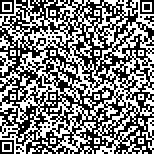Archive > Volume 41 Issue 2 > 2015,41(2):153-159. DOI:10.7519/j.issn.1000-0526.2015.02.003 Prev Next
Effects of Eastward Stretching Iran High on Precipitation in Rainy Season over Tibetan Plateau
- Article
- Figures
- Metrics
- Preview PDF
- Reference
- Related
- Cited by
- Materials
Abstract:
Using the NCEP/NCAR reanalysis data and the Tibetan Plateau meteorological stations daily precipitation data from May to September 1980-2011, 967 cases of Iranian high eastward stretching effecting Tibetan Plateau are analyzed. Precipitation over Tibetan Plateau is classified into 4 types, which are heavy rain pattern, moderate rain pattern, light rain pattern and non rain pattern with corresponding total days of 158 d,516 d,165 d and 128 d. As Iran high ridge line is more northerly (southerly), 500 hPa north south flow convergence is stronger (weaker) and 200 hPa divergence is larger (smaller) so that greater (smaller) precipitation occurs on the plateau. In addition to the direct impact of Iran high impacting on general circulation over Tibetan Plateau, its ridge line is northerly (southerly), Somali jet is stronger (weaker), the Bay of Bengal water vapor transport is stronger (weaker), indirectly leading to more (less) precipitation over Tibetan Plateau.
Keywords:
Project Supported:
Clc Number:


Mobile website









